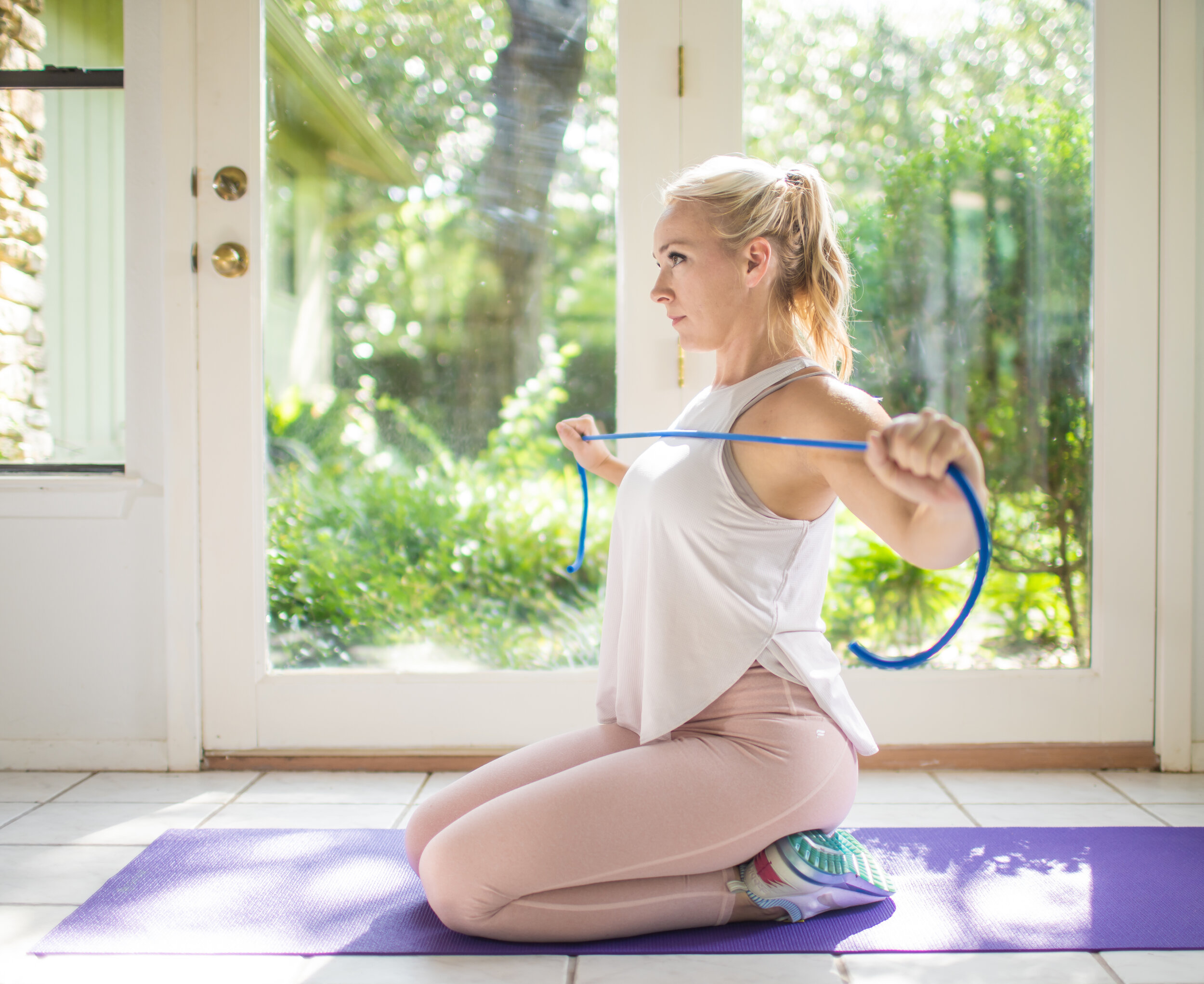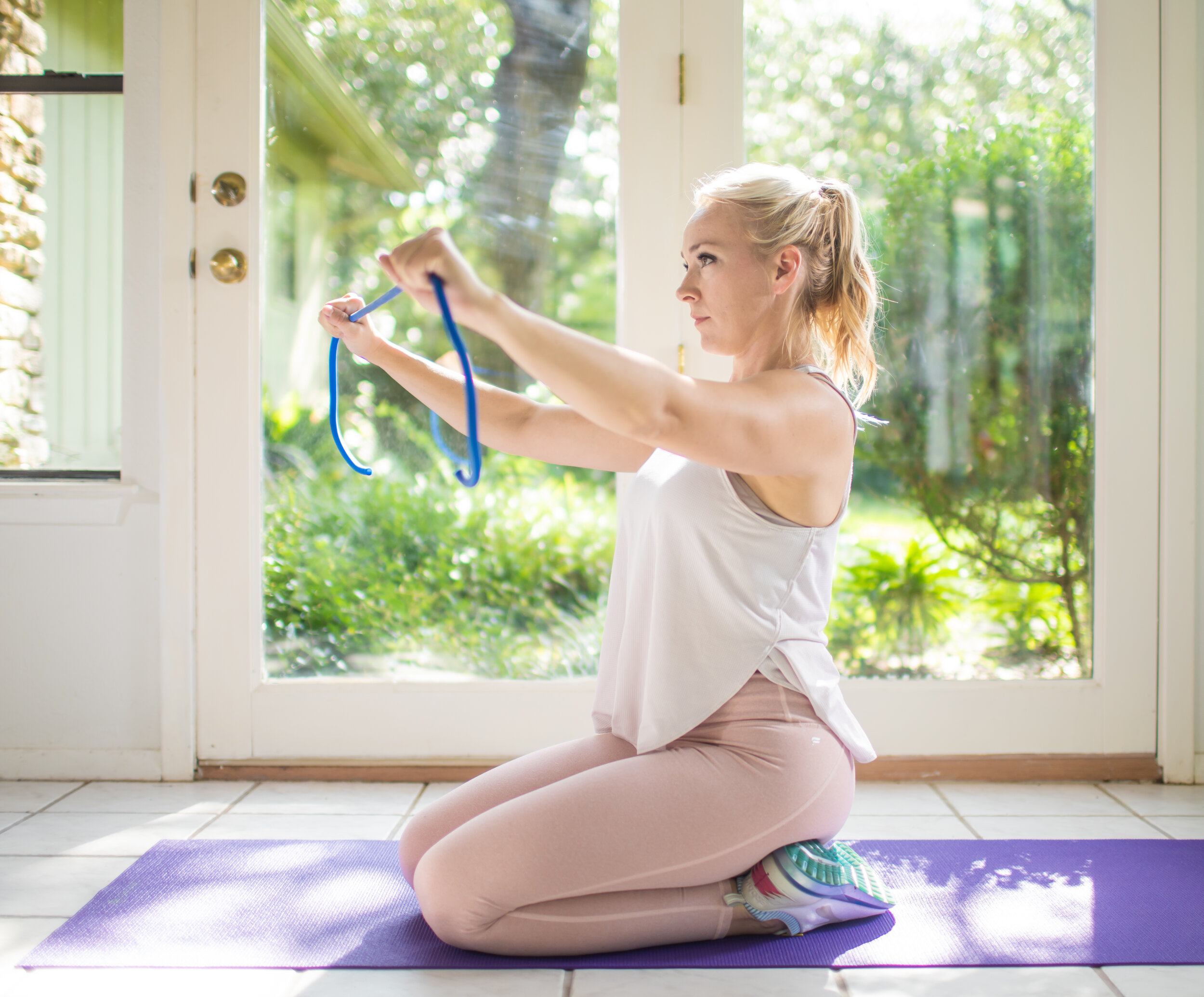The standing calf raise is an easy, versatile exercise that can be done anywhere. You can use a standing calf raise machine at a gym, which allows you to load weight on your calves. You can also do this from anywhere with no weight. Even if this doesn’t feel challenging for you, it’s a great exercise that can build your calves.
I’ll show you a variation of the unweighted standing calf raise that allows for a bit more challenge on your calves. I first learned these from Nick Tumminello.
Why Should I Do Calf Raises?
Calf raises are beneficial for many reasons. Calf raises work the two primary muscles that you think of when you think of calves: gastrocnemius and soleus. Together, these muscles assist with any kind of bipedal locomotion: walking, running, skipping. Basically, anything athletic or movement based.
Strengthening your calves through a full range of motion also improves ankle mobility and strength.
How to do the Standing Calf Raise
- Stand flat on the ground, feet about shoulder width. Optionally, you can stand with your toes 1 or more inches higher than your heels for greater range of motion.
- Let your weight sink into your heels if toes are elevated.
- Keep your knees slightly bend and legs NOT locked out
- Push the balls of your feet into the ground.
- Squeeze your calves as you raise your heels as high as you can.
- Return to your start position in a controlled manner; don’t just drop your heels back down.
- Repeat for as many reps as you are aiming for
How to Modify The Calf Raise for Greater Challenge
If you don’t have a calf raise machine, then to challenge yourself, we’re simply going to add more range of motion here. To do this, take a step back from a wall and then lean into it. The starting position of your heel will be lower, but the rest of the movement mechanics will be similar. This is called the leaning calf raise.
Related: these often overlooked exercises are some of the best exercises for rear delts
Control through the whole movement (up and down), and squeeze your calves at the top.
Should I Add Weight to My Calf Raises?
You can add weight if you’d like to increase the challenge of your calf raises, but this is not always necessary. You will still get some benefits without a big machine or heavy barbell.
Start with 3 sets of about 20, with no weight. If you haven’t been doing any direct calf work, I’d recommend doing this 2-3 times a week for a couple weeks. From there, you can hold a weight if you’d like. You can add more reps and sets as well. Be sure to give yourself an easy couple of weeks first, though.
In a study of 26 untrained young men, groups did either heavier weight (lower rep) or lower weight (higher rep) calf work. Both groups shows statistically significant increase in the calf muscles. Full study by Brad Schoenfeld and Bret Contreras here.
Yes, they were untrained to begin, so it stands to reason they would see progress, but this is really heartening, especially to those who work out at home without tons of equipment. So – get to your calf work! Increase your calf strength, balance, ankle mobility and all from home.
Please message me if you have questions, or need a plan for your fitness!

References:
Brad Schoenfeld, Bret Contreras, et al., “Do the anatomical and physiological properties of muscle determine its adaptive response to different loading protocols?” Physiology Reports, 27 April 2020.

About the author
Kathryn Alexander is a strength coach and personal trainer in Austin, Texas. She loves hiking, college football, and the feel of a perfectly knurled barbell. Read more about Kathryn here.



























